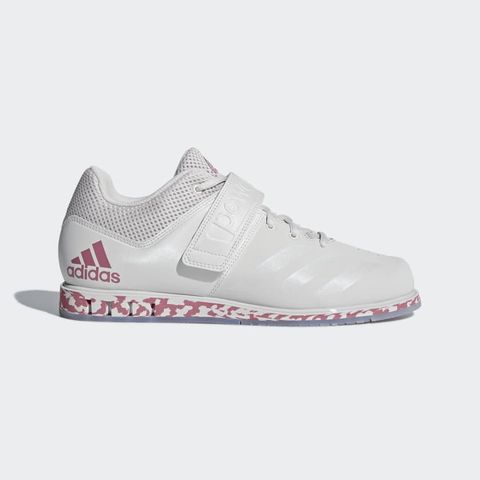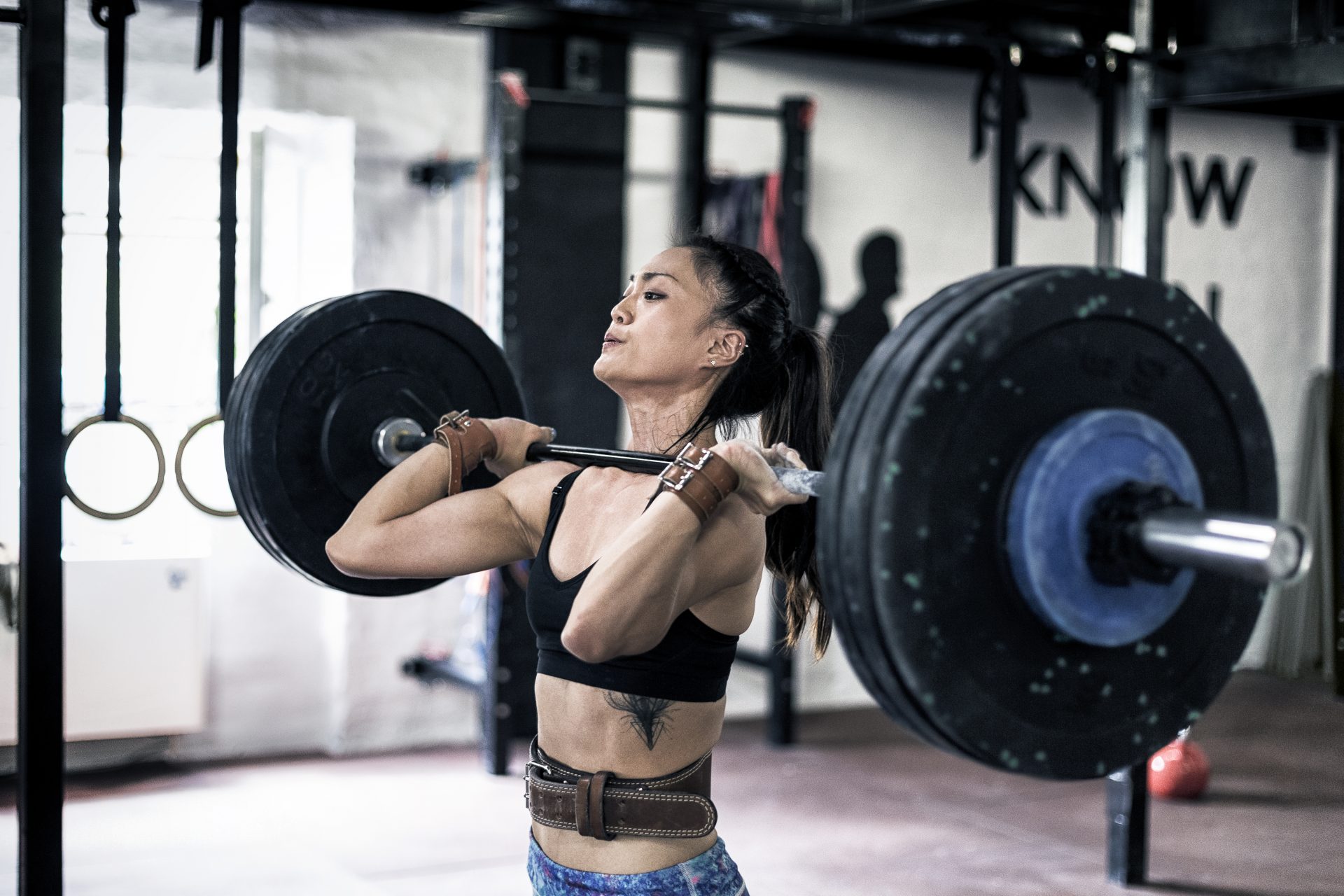“Do I need to wear weightlifting shoes?”
How important are the right shoes when strength training? Strong Women investigates the benefits of weightlifting shoes, whether you need them and how they can help you lift heavier.
If you strength train regularly, you’ll know that the most important thing to perfect is your form. Whether you’re squatting, deadlifting or pressing, mastering the proper form keeps you from getting injured and ensures the right muscles are being engaged by the exercise.
So clearly, it’s really important what you do. But how much does it matter what you wear – particularly on your feet?
One of the cardinal sins of the gym, along with hogging weights and not re-racking your equipment, is wearing running shoes to weightlift.
You may also like
“How I went from the kid who didn’t like sport to weightlifting 100kg”
There are a few different camps when it comes to what you should wear, though. Many lifters choose a flat, solid soled shoe like Converse or Vans, while others (like me) opt to lift in just socks.
But you may have also seen people working out in specialist weightlifting shoes. These are made specifically with stiff, rigid heels that don’t allow for compression. Rather than absorb, they help you use all the force your body produces to help you move weight.
Put simply: the more force you can produce, the more weight you can lift.
But if you’re not competing or lifting heavy, do you really need them? And can they actually help you lift heavier? We asked the experts.
What are the benefits of weightlifting shoes?
“Weightlifting shoes are more stable and allow you to generate more force then your typical trainers,” says Dr Folusha Oluwajana, a GP and personal trainer.
While foamy, cushioned footwear can be helpful during some activities, heavy and explosive lifting like squats, deadlifts and presses should be done with sturdy shoes that don’t allow for excessive movement of your foot.
“Weightlifting shoes provide you with that additional support within your training regime,” agreesUmarah Hussain, who regularly lifts up to 220kg.
“Other shoes just aren’t as multifaceted as weightlifting shoes – they only provide heel to toe movement support whilst the latter provides side to side movement, allowing flexibility during compound movements such as squats,” she says.

Can weightlifting shoes help you lift heavier?
“The answer is yes,” says Dr Oluwajana.“When lifting, you want to maximise stability and your contact surface area with the floor in order to generate the most force. You should evenly distribute your weight between three contact areas, the base of your big toe, the base of your little toe and the base of your heel, like a tripod,” she says.
“Weightlifting shoes can also provide the correct support for torso angle and greater depth of the squat, which subsequently leads to hypertrophy”, says Hussain.
Research has shown that, because of this support, weightlifting shoes can help lifters with limited squat depth to achieve greater squat depth without compromising their posture. Furthermore, a 2012 study concluded that wearing weightlifting shoes helped athletes achieve the recommended vertical position used for squatting.
When wearing weightlifting shoes, you feel more cemented to the ground, which can help with your confidence, particularly when lifting heavy. “They are designed to provide safety. They support the ankle and foot when lifting and have added straps for even more support and stability, which can reduce your risk of injury when you are performing complex movements,” says Dr Oluwajana.
You may also like
Powerlifting vs weightlifting, what is the difference? Fitness trainers answer the most googled questions
Why shouldn’t you wear running trainers to weightlift?
Just as it’s important to run and hike in the right shoes, it’s equally important to lift in the right ones too.
Running trainers have an inbuilt cushion to absorb impact with each step you take, which makes them great for running and protecting your joints from that impact, but not ideal for weightlifting.
“Running shoes don’t offer stability, which negates the idea of lifting as a whole,” says Hussain. “On top of this, the arch within the running shoe is unable to facilitate muscle development, meaning you won’t see muscle growth as effectively as you would with lifting shoes.”

You may also like
Strength training: 6 of the best gym shoes for weight training and resistance workouts
Are there any disadvantages to wearing weightlifting shoes?
Because weightlifting shoes provide so much support and stability, they can have a tendency to mask a lifter’s mobility flaws. This means that they could be used as a crutch for bad form which, if left uncorrected, could create a false sense of correct joint and tissue integrity and lead to injury.
“Weightlifting shoes should also only be used for weightlifting,” advises Dr Oluwajana. “If your workout requires other movements like jumping and skipping, crossover shoes may be more appropriate.” Crossover shoes provide the best of both worlds, sitting between weightlifting shoes and running trainers.
You may also like
Barefoot training: what are the pros and cons of working out without shoes?
So, do you really need weightlifting shoes?
Like in most sports, having the right equipment usually means you’ll be better, and weightlifting shoes have the ability to get you in a better movement position for most strength and power lifts.
“By selecting lifting shoes, you’re allowing your lift to stabilise your feet and channel your lift into a strong force that helps you pick the drive the weight up, or down,” says Hussain.
But if you don’t want to invest in them right now, there are other options. “You can also create heel elevation when squatting by elevating your heels under small plates or using a wedge in the gym,” suggests Dr Oluwajana.
However, experts stress that regardless of footwear choice, it is critically important to include exercises to increase foot and ankle proprioception, strength, mobility, and flexibility.
“They are not a substitute for good form,” advises Dr Oluwajana. “Anyone can invest in weightlifting shoes at any point in their lifting journey, but first make sure your technique is good and safe without them.”
For more ways to elevate your strength training potential, check out the Strong Women Training Club where you’ll find tips, training plans and workout videos.
Images: Getty/Adidas
Source: Read Full Article


